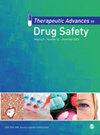第六届欧洲药物警戒大会:发言摘要
IF 3.4
3区 医学
Q2 PHARMACOLOGY & PHARMACY
引用次数: 0
摘要
乌普萨拉监测中心是一个独立的、自筹资金的瑞典基金会。药品安全领域有许多利益相关者,通过利用我们在光伏世界中的不同能力、技能和角色,UMC努力始终追求我们的愿景:共同努力促进药品安全。UMC的不同业务领域侧重于各种外部利益相关者,其中一个领域侧重于世界卫生组织国际药物监测方案(世界卫生组织PIDM)。自1968年以来,该方案为世界卫生组织成员国在药物警戒方面的合作提供了一个论坛。这使方案成员能够警惕世界各地出现的伤害模式,但仅从当地数据来看可能并不明显。目前有170多个成员国/地区。1978年,在瑞典政府的赞助下,该方案的业务活动转移到乌普萨拉,这标志着我们组织的起点,并被指定为世界卫生组织800个合作中心之一-世界卫生组织国际药物监测合作中心,世界卫生组织报告的医药产品潜在副作用全球数据库。该金矿用于为各种光伏利益相关者提供见解。世界卫生组织PIDM成员通常是国家监管机构,收集患者、医生、制药行业和国家光伏系统内其他利益相关者的不良事件报告。VigiBase收集了来自计划成员的数据,目前包含约3300万份病例报告。对于其他外部利益相关者,VigiBase数据可以通过VigiBase Services以有限的详细程度提供,例如向学术界、制药行业和医疗保健提供者开放。2,3除了VigiBase维护,我们的合作中心还为项目成员提供在其国家环境中进行数据收集和分析的IT解决方案,以支持他们在市场上安全产品的使命。有许多IT解决方案,但要强调两个:例如,VigiFlow是一个数据收集和管理系统,被100多名成员用作其国家安全数据库。在VigiLyze,成员们免费拥有一个强大的分析工具,可以分析国家数据以及区域合作中的数据,并即时访问VigiBase中的全球数据和其他人的经验作为参考。UMC和其他项目成员发现的安全信号也可在VigiLyze中使用。合作中心生成并分享关于药品和疫苗安全性的可信和循证信息,供监管机构和科学高级别委员会进一步决策。这项工作依赖于使用复杂的信号检测方法,也依赖于内部和外部的临床专业知识。选定的信号也发表在科学期刊上,以接触到更广泛的受众,如处方医生。此外,我们的中心通过提供符合其需求的培训,帮助国家药物警戒中心支持药物的安全使用。我们收到了世界卫生组织PIDM成员和世界卫生组织地区的许多培训请求。我们的实践和网络课程为国家中心提供了技术知识和技能,以加强其药物警戒系统和实践。我们还通过各种信息渠道促进全球光伏见解和专业知识的共享;例如,《乌普萨拉报告》杂志和网站、我们名为“药物安全问题”的播客以及我们的各种社交媒体渠道。新冠肺炎疫苗安全性监测是UMC的首要任务,并为此分配了大量资源。我们最近的见解和经验丰富了我们,使我们更加接近合作伙伴,我们也为迎接下一个挑战做好了更好的准备。本文章由计算机程序翻译,如有差异,请以英文原文为准。
The 6th European Pharmacovigilance Congress: speaker abstracts
Uppsala Monitoring Centre (UMC) is an independent and self-funded Swedish foundation. There are many stakeholders in the field of medicines safety, and by drawing on our different competences, skills and roles in the PV world, UMC strives to always pursue our vision: working together to advance medicines safety. UMC's different business areas focus on various external stakeholders, one of which focuses on the WHO Programme of International Drug Monitoring (WHO PIDM). Since 1968, the programme has provided a forum for WHO Member States to collaborate in pharmacovigilance. This enables programme members to be alerted to patterns of harm emerging across the world, but which might not be evident from their local data alone. There are now over 170 member countries/territories. The programme's operational activities were moved to Uppsala in 1978 under the sponsorship of the Swedish government, which marked the starting point for our organization and its designation as one of WHO's 800 Collaborating centres - the WHO Collaborating Centre for International Drug Monitoring.1 UMC is custodian and manager of VigiBase, WHO's global database of reported potential side effects of medicinal products. This gold mine is used to generate insights for various PV stakeholders. The WHO PIDM members, which are usually the national regulatory authorities, collect reports of adverse events from patients, physicians, the pharmaceutical industry and other stakeholders within their national PV systems. VigiBase accumulates the data from programme members, and currently contains about 33 million case reports. For other external stakeholders, VigiBase data can be made available with limited level of detail via VigiBase Services, open to, for example, academia, the pharmaceutical industry and health care providers.2,3 Besides VigiBase maintenance, our Collaborating Centre also provides programme members with IT solutions for data collection and analysis in their national setting to support their mission for safe products in their markets. There are many IT solutions, but to highlight two: VigiFlow, for example, is a data collection and management system, used by over 100 members as their national safety database. And in VigiLyze, members have a powerful analysis tool free of charge, which can analyse national data as well as data in regional collaborations with instant access to the global data in VigiBase and others' experiences as a reference. Safety signals found by UMC and other programme members are also available in VigiLyze. The Collaborating Centre generates and shares credible and evidence-based information on the safety of medicines and vaccines for further decision-making by regulators and scientific high-level committees. That work relies on the use of sophisticated methods for signal detection, but also on internal and external clinical expertise. Selected signals are also published in scientific journals to reach a broader audience such as the prescribers. In addition, our centre helps national pharmacovigilance centres to support safe use of medicines by offering training aligned with their needs. We get many training requests from WHO PIDM members and WHO regions. Our hands-on and web-based courses provide national centres with the technical knowhow and skills to strengthen their pharmacovigilance systems and practices. We also facilitate the sharing of PV insights and know-how globally using a variety of channels for information;for example, Uppsala Reports magazine and website, our podcast called Drug Safety Matters and our various social media channels. COVID-19 vaccine safety monitoring is a top priority at UMC, and significant resources have been allocated to this. Our recent insights and experiences have enriched us and brought us even closer to our collaborating partners and we are better prepared for the next challenges.4.
求助全文
通过发布文献求助,成功后即可免费获取论文全文。
去求助
来源期刊

Therapeutic Advances in Drug Safety
Medicine-Pharmacology (medical)
CiteScore
6.70
自引率
4.50%
发文量
31
审稿时长
9 weeks
期刊介绍:
Therapeutic Advances in Drug Safety delivers the highest quality peer-reviewed articles, reviews, and scholarly comment on pioneering efforts and innovative studies pertaining to the safe use of drugs in patients.
The journal has a strong clinical and pharmacological focus and is aimed at clinicians and researchers in drug safety, providing a forum in print and online for publishing the highest quality articles in this area. The editors welcome articles of current interest on research across all areas of drug safety, including therapeutic drug monitoring, pharmacoepidemiology, adverse drug reactions, drug interactions, pharmacokinetics, pharmacovigilance, medication/prescribing errors, risk management, ethics and regulation.
 求助内容:
求助内容: 应助结果提醒方式:
应助结果提醒方式:


